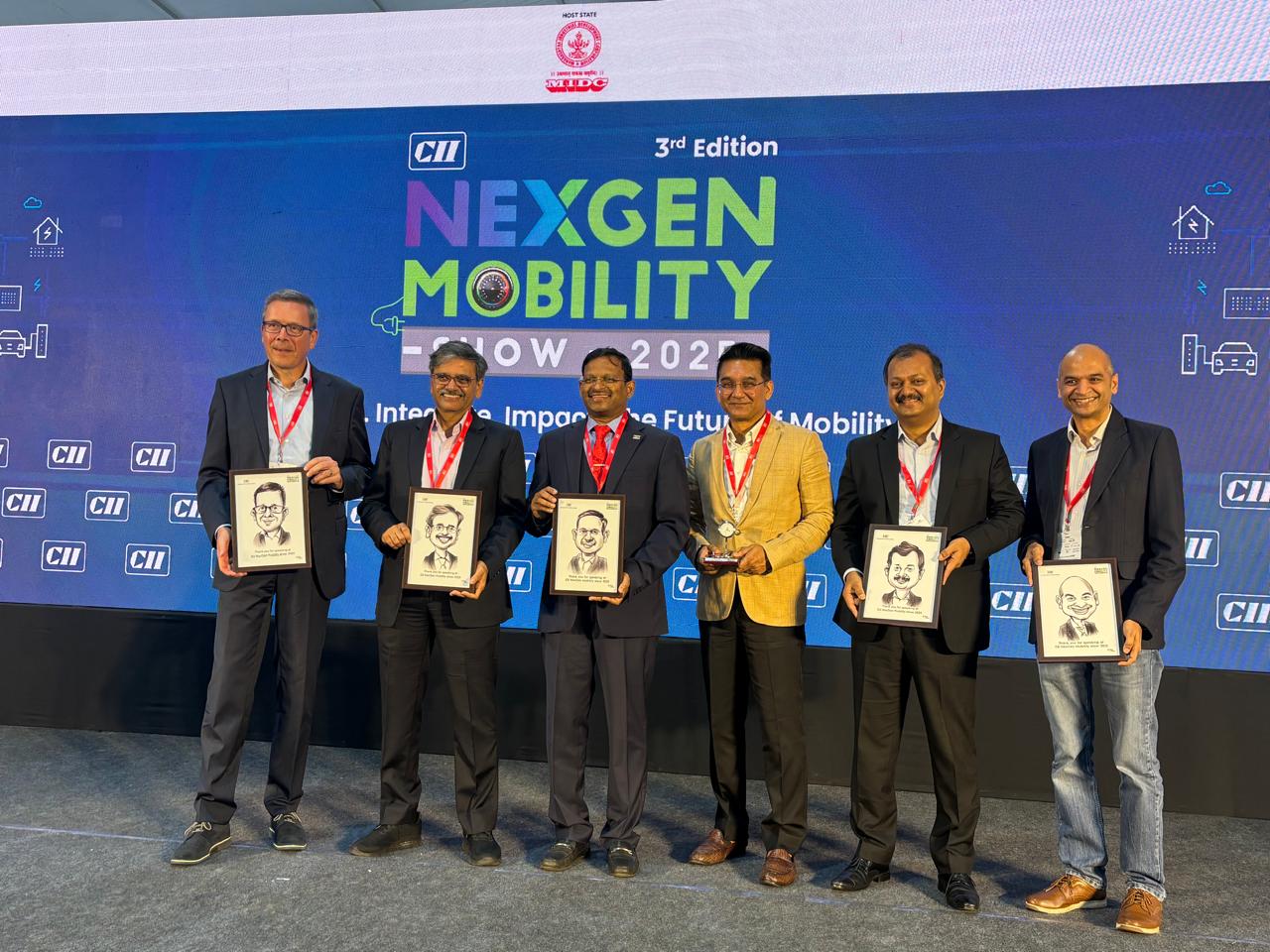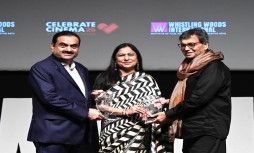Value-Driven Approach Balancing Innovation with Affordability Is Key to Software-Led Mobility Revolution – Experts
October 12,2025
The automotive industry is rapidly transforming into a software-led ecosystem, with software—particularly AI-driven features—becoming an increasingly significant contributor to vehicle value. With car penetration in India expected to rise substantially by 2035, experts at the CII Software-Led Mobility Conclave emphasized the need for a value-driven approach that balances cutting-edge innovation with affordability. The panel discussion was part of the CII NexGen Mobility Show 2025 at the Pune International Exhibition Centre, Moshi.
Held under the theme “Innovate. Integrate. Impact: The Future of Mobility,” the flagship international exhibition and conference is bringing together stakeholders from across the automotive value chain to chart the future of mobility.
Mr CV Raman, Executive Committee Member , Maruti Suzuki India Ltd said that as the share of software increases , AI further enhances feature additions, we need a value driven approach .
He added that car penetration per thousand is estimated to increase from 36 to 150 till 2035. So Mobility for the next billion is essential , but it will increase the complexity , one solution does not fit all and we will have to find multiple solutions . Value driven approach is needed to balance between feature additions and cost up. Smaller , fewer , lighter , shorter , beautiful is the overriding principle on which we work. An SDV strategy that delivers value for customers is what is required.
Mr Sven Patuschka, CTO Tata Passenger Vehicles and Tata Electric Mobility said that as we see techtonic shift in customer landscape with one of the youngest and gender diverse populations in the world. This cohort forms an increased share of the customer base. They have their choices , they care for the environment , value journeys over destination , customisation , personalisation, smart features , continued upgrades and with these changing customer profiles there is fundamental change in the way products are being reimagined . We are seeing the emergence of new architecture to provide a unique experience which becomes a true enabler for innovation. It is not about the number of features but the quality of integration. Technology and Competency, portfolio, collaboration and business model integration will be imperatives of success of software led mobility.
Mr Nishit Behera, Executive Director, Business Development and Strategy at RSB Group said that with the advancement in vehicles , it also means as suppliers we need to understand the changes and address the needs of changing landscape. We are collaborating with institutes , upgrading our software capabilities , product design , and integrating technologies .
Mr Ravi Dolli , Chief Executive Officer CASTCO said that the Indian automobile sector has been known for engineering proves, today software is no longer an accessory , it is driving the growth . What was once hardware dominated , is becoming software centric. This revolution offers India huge opportunities with our strength in the software and startup ecosystem . To seize this opportunity we need to collaborate . For this three board areas are an absolute necessity which includes building robust digital infrastructure and scaling indigenous software solutions which should power Indian as well as global mobility ecosystems and creating a skilled work for tomorrow with multidisciplinary curriculum.
Mr Sundar Ganapathi Chief Technology officer Automotive, Tata ELXSI said that the era of the software defined vehicles is here, change in the mindset of the Indian customers is similar to what is happening world over. Cars that are hitting the Indian roads have a lot more software content . Hardware centric OEMs cannot just hire software people , the entire ecosystem must evolve . We must leverage the GCC sector and Indian borne companies which has been developing solutions for the world , tap into the market and develop localised solutions. What was a car software will soon become a software car.
India’s automobile sector, currently valued at USD 130 billion, is projected to grow to USD 300 billion by 2030, contributing nearly 12% to India’s GDP. The electric vehicle (EV) segment alone is expected to attract investments worth USD 20 billion and generate over 5 million jobs in the next five years. With the government’s strong emphasis on manufacturing, green mobility, and exports, the NexGen Mobility Expo 2025 underscores India’s rapid progress toward becoming a global hub for sustainable mobility solutions.
The transition to software-defined vehicles is not just about adding code to cars—it’s about reimagining the entire E/E architecture, evolving from distributed systems to full centralized intelligence. While regions like North America, Europe, China, and Japan are pursuing their own approaches, India stands out with its cost advantage, deep talent pool, and rapid R&D growth. But OEMs must realize that success won’t come from simply ‘hiring software people’—it demands building a complete software ecosystem, blending internal engineering with partners, platforms, cybersecurity, and middleware. This ecosystem shift will decide who truly leads the future of mobility. - Mr Sundar Ganapathi, Chief Technology Officer - Automotive Tata Elxsi
The exhibition showcases next-generation technologies across electric, hybrid, hydrogen, and alternative fuel vehicles, alongside innovations in battery systems, charging infrastructure, and digital mobility platforms, reaffirming CII’s commitment to fostering collaboration and driving the next phase of India’s automotive transformation.











